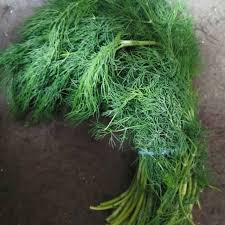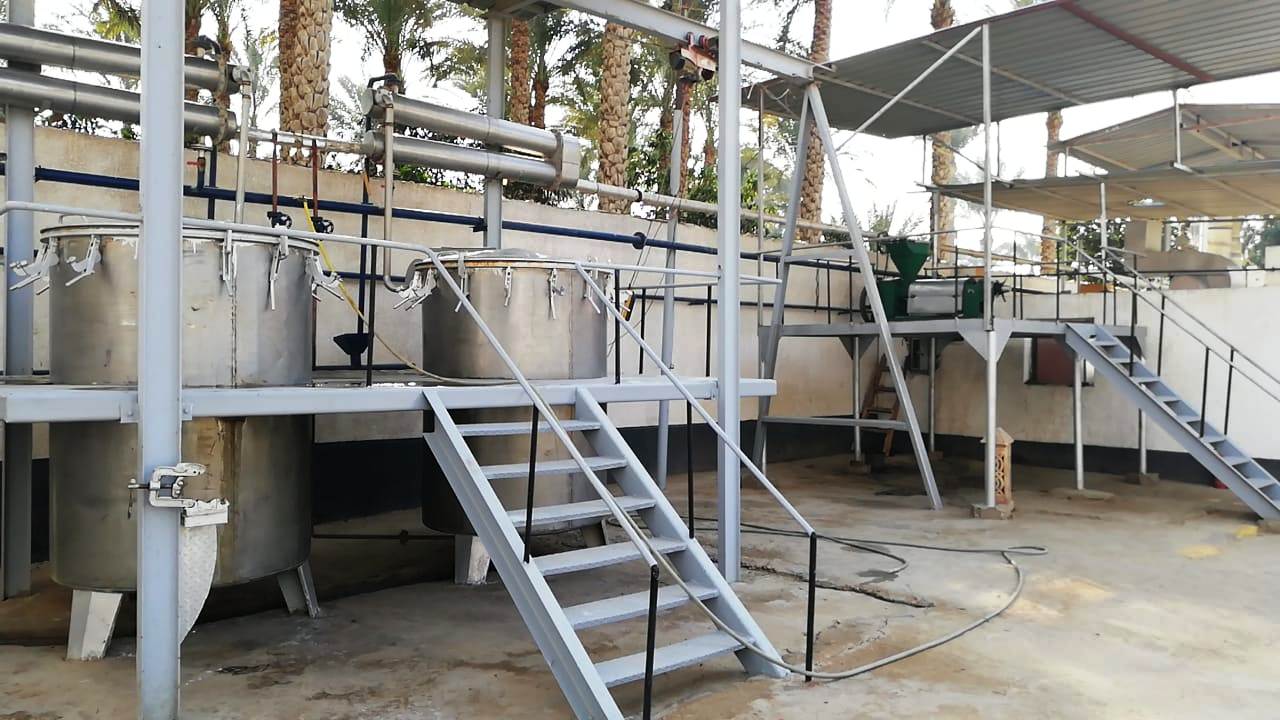Dill Herb Anethum graveolens Essential Oil
Login to view prices
Common name: Dill
Latin name: Anethum graveolens L.
Family: Apiaceae (Umbelliferae)
Other names: Engl.: dill. Deu.: Dill, Gurkenkraut. Suom.: tilli. Sven.: dill. Fran.: aneth, faux anis, fenouil bâtard. Bot. syn.: Anethum sowa Roxb. ex Flem., Peucedanum graveolens (L.) Benth. & Hook. f., Peucedanum graveolens Hiern., Peucedanum sowa Roxb. ex Flem..
Description:
Dill is a hapaxanthic annual herb very similar in appearance and structure to fennel, that reaches a height of 3 to 4 ft (0.9 - 1.2 m) at maturity. It has finely cut ferny leaves that appear quite feathery, and small, yellowish-green flowers are borne in umbels. The plant usually consists of a single stalk, with hollow stems and blue-green foliage.
Botanical Origin:
Common name: Dill
Latin name: Anethum graveolens L.
Family: Apiaceae (Umbelliferae)
Other names: Engl.: dill. Deu.: Dill, Gurkenkraut. Suom.: tilli. Sven.: dill. Fran.: aneth, faux anis, fenouil bâtard. Bot. syn.: Anethum sowa Roxb. ex Flem., Peucedanum graveolens (L.) Benth. & Hook. f., Peucedanum graveolens Hiern., Peucedanum sowa Roxb. ex Flem..
Description:
Dill is a hapaxanthic annual herb very similar in appearance and structure to fennel, that reaches a height of 3 to 4 ft (0.9 – 1.2 m) at maturity. It has finely cut ferny leaves that appear quite feathery, and small, yellowish-green flowers are borne in umbels. The plant usually consists of a single stalk, with hollow stems and blue-green foliage.
Range & Habitat:
Dill, Anethum graveolens L., an annual or biennial aroma herb native to Europe, is naturalized to North America and the West Indies. Principal dill production areas are India and Pakistan, but Egypt, Fiji, Mexico, the Netherlands, the United States, England, Hungary, Germany, and Holland also have commercially productive areas. The plant grows erect and can reach a height of one meter. It is characterized by hollow stems, blue-green leaves, and yellow-flowering compound umbels, which produce a dried ripe fruit commonly called seeds.
The reported life zone is 6 to 26 degrees centigrade with an annual precipitation of 0.5 to 1.7 meters and a soil pH of 5.3 to 7.8.
The hardy plant requires long days and cool weather, and is sensitive to environmental stresses, such as low moisture, hail, high temperatures, strong winds, and hard rains during the flowering and seed maturation period. Seed yields will decrease under very high temperatures. Oil yields increase with greater day length and warmer temperatures. Dill requires 12 to 18 in (30 – 45 cm) of water during the growing season.
The plant grows best in deep, fertile loam soils.
Planting & Cultivation:
Seeding
Dill seed is very small and requires a fine, firm seedbed with moisture close to the surface for maximum emergence. Germination occurs in 10 to 14 days at approximately 15° C. Dill should be seeded in early May or as early as possible after the danger of frost is over.
The seed should be placed at a depth of 0.75 to 1.0 in (2 – 2.5cm). Deeper seeding will result in poor emergence.
Commercial dill is generally planted in rows 21 to 24 in (54 – 61 cm) apart, although research plots have produced well at 14 inch (35 cm) and 6 inch (15 cm) row spacings. The seeding rate for dill is 8 to 10 lb/ac (9 – 11 kg/ha).
Fertilization
Dill responds well to high levels of fertility. Soil sampling will help determine the fertility level of the soil, but generally 60 lb/ac (66 kg/ha) of nitrogen and 30 lb/ac (33 kg/ha) of phosphorous are required. If the soil is low in potassium, an application of 30 to 40 lb/ac (33 – 44 kg/ha) may be necessary. Fertilizer may be broadcast or applied as a side dressing, but should not be applied directly with the seed.
Harvesting and Preparing for the Market:
Harvesting
Dill matures approximately ninety days after seeding. Seed harvesting should be done when the crop is damp, during early morning, to decrease shattering. For the fresh herb market, dill should be cut at first bloom. When harvesting for essential oil, dill should be cut when the early seed clusters begin to turn brown. Oil quantity and quality are their best at this time.
Dill is harvested for the limonene, dillapiole and carvone content in its oil. The dill plant is allowed to wilt in the swath for 24 hours and then is picked up with silage harvesters and blown into steam-tight forage boxes.
Yield of seed per Acre:
Typical yields for dill seed range from 500 to 800 lb/ac (560 – 900 kg/ha).
Dill oil yields approximately ten percent of seed yields. (50 – 8- lb/ac)
Method of Extraction:
By Steam Distillation.
Dill herb is extracted by steaming for 1.5 hrs, some other producers extend the time to 4 hrs.
[1] Source: Simon, J.E., A.F. Chadwick and L.E. Craker. 1984. Herbs: An Indexed Bibliography. 1971-1980. The Scientific Literatureon Selected Herbs, and Aromatic and Medicinal Plants of the TemperateZone. Archon Books, 770 pp., Hamden, CT. The Essential Oils. By Ernest Guenther. 1950
Notes:
- The quality of dill oil can fluctuate greatly, depending on the percentage of seed oil, the physiological maturity of the seeds used for oil. The time of harvest may also be significant, because carvone is synthesized during the day from phellandrene breakdown
- The more mature and drier the herb material the more hours will be required to complete distillation, the higher is the carvone content of the oil, and the lower is its content of terpenes (chiefly phellandrene and d-limonene). Such oil, on the basis of odor, properties, and composition, closely resembles seed oil. Distillation of such mature herb is a lengthy process, lasting sometimes 8 or 9 hr.
- The typical odor and flavor of herb oil are due mainly to its content of d-phellandrene; the higher the content of phellandrene, the more the oil resembles the fresh herb. The properties of a dill oil depends upon the ratio of phellandrene and carvone, which in turn depend on the ratio of herb to seed in distillation material; in other words, upon the state of maturity of the plant.
- Oils with more carvone exhibit a lower content of phellandrene, usually in favor of more limonene. Such oils resemble seed oils more than herb oils.
- Changes in the composition of dill herb oil caused by state of ripeness of the herb material:
- An oil distilled from partly seeding partly flowering herb material contained 13.0% of carvone. Optical rotation [+] 106°. The odor possessed a fine dill herb character.
- An oil distilled from similar material contained 15.6% of carvonme. Optical rotation [+] 100°30’. It had a fine dill herb character.
- An oil distilled from herb material cut right after the flowering period contained 21.8% of carvone. The odor was similar to the first two oils.
- An oil distilled from green herb material cut at the proper moment of maturity, but partly dried before distillation, had a specific gravity at 15° of 0.8929, a carvone content of 34.6%. and an optical rotation of [+] 74°.
- An oil distilled from half-matured and half-dried herb material had a carvone content of 45.8%.
- An oil distilled from plant material cut when half-matured, but completely dried after cutting had a carvone content of 52% and an optical rotation of [+] 67° 45’.
- An oil distilled from similar plant material had a carvone content of 58% and a specific gravity at 15° of 0.920. It gave a strong phellandrene reaction. The oil was soluble in 0.9 parts of 80% alcohol.
- An oil distilled from dill seed and chaff had a carvone content of 64.4%.
| Adulterant | Appropriate method for detection | Notes |
| – With all kinds of terpenes, e.g.,limonene,
– the terpenes resulting from the preparation of sweet orange oil concentrates. – The terpenes obtained in the extraction of carvone from caraway seed oil. |
It is almost impossible to detect sophistication of that sort in the course of ordinary routine analysis. The oil must, therefore, be submitted to very careful organoleptic tests. |
Additional information
| Weight | N/A |
|---|---|
| Dimensions | N/A |
| Oil Purity | 100% Natural & Pure without any chemical, flavor, food additive or carrier. |
| Ship from | Egypt |
| Country of Origin | Egypt |
| Cultivation Type | Organic Certified, Organic not Certified, Conventional |
| Oil Bulk Packaging | 180 kg Steel Drum, 25 kg HDPE Plastic Jerrycan, 50 kg HDPE Plastic drum |
| HS Code | 33012923 |
| CAS Number | 90028-03-8 |
| Oil Documentation Available | Allergen Free Certificate, Bovine Spongiform Encephalophathy (BSE) Certificate, Certificate of Analysis (COA), GMO Certificate, GRAS Status Statement, Halal Certificate, Herbal Origin Statement, KOSHER Certificate, Manufacturing Flow Chart, Material Safety Data Sheet (MSDS), Organic Certificate, Pesticide Residual Certificate, Researches & Studies, Technical Data Sheet (TDS), WADA Prohibited list Statement |
-
Login to view prices
Fenugreek is an herb that is similar to clover. It is native to the Mediterranean region, southern Europe, and western Asia. The seeds are used in cooking, in medicine, and to hide the taste of other medicine. Fenugreek seeds smell and taste similar to maple syrup. Fenugreek leaves are eaten in India as a vegetable. Fenugreek is taken by mouth for diabetes, menstrual cramps, high cholesterol, and many other conditions, but there is no good scientific evidence to support most of these uses.
Login to view prices Read more -
Login to view prices
-
Login to view prices
-
Login to view prices








